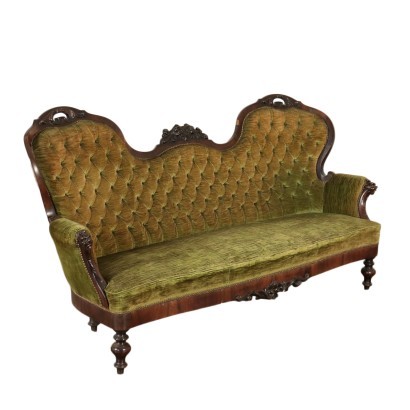Eclectic Revival Sofa Walnut Italy 19th Century
Features
Style: Eclecticism (1870-1890)
Age: 19th Century / 1801 - 1900
Origin: Italy
Main essence: Walnut
Material: Padded
Description
Eclectic sofa supported by 4 refined feet; the lower band has a central engraving with leafy patterns, same as the one on the moulded back. The pillars of the armrests are engraved with grotesque mask. Walnut with padded seat and back covered with capitonné fabric.
Product Condition:
Fair condition. Wear consistent with age and use.
Dimensions (cm):
Height: 113
Width: 210
Depth: 76
Seat height: 43
Additional Information
Style: Eclecticism (1870-1890)
Towards the end of the 19th century, the taste for the combination of elements taken from various styles of the past asserted itself. The eclectic style is therefore characterized by the mixture of styles typical of the Gothic, the Baroque, the Renaissance, the Neoclassicism in search of elegant compositional virtuosity.Find out more on our blog:
The dictionary of antiques: Eclecticism
Classic Monday: a sofa from the 1800s example of eclecticism




























